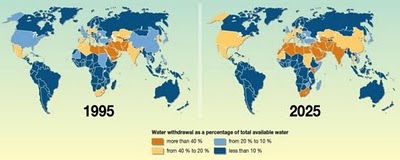-
On the Air With Arab Demographics
›A recent radio interview on the “Demographics of the Arab World” should be a must listen for those in the World Bank, where discussions of the Arab youth bulge are largely off the table.
The interview with Magda Abu-Fadil of the American University of Beirut and Bernard Haykel of Princeton University suggests that scholars of the Arab world are not so timid, as also evidenced by UNDP’s 2009 Arab Human Development Report.
However, during the interview with Abu-Fadil and Haykel, Worldfocus’ Martin Savidge falls victim to two significant misconceptions that are worth mentioning for their pervasiveness among political science and economics communities:- Savidge believes that countries tend to risk political violence when their percentage of young adults is above 35 percent. This is close, but not quite correct. It’s the proportion of young adults in the adult population – i.e., the working-age population, as opposed to the population in general – that indicates a risk of fractious politics. Children (those below the age of 14) should not be counted in this indicator, yet in much of the literature they mistakenly are.
- Savidge believes that large numbers of youth are an economic “good deal.” Here, Abu-Fadil and Haykel set him straight, noting that a bulge among the young adult population produces a demographic bonus only when fertility has significantly declined; the childhood cohorts are small and the subject of increased investment; and the youth moving into adulthood are educated.
Big changes could occur along the edges of the Arab world in the coming decade. Fertility decline, more recently, has made its way to the Gulf Cooperation Council (GCC) states, although they still need a champion for women’s rights. Turkey had Ataturk, Iran had Reza Shah, and Tunisia had Habib Bourguiba. It’s no accident that these countries were the first to experience fertility decline and age structural changes—their leaders laid the groundwork decades ago.
Can a leader, however, with that amount of political guts and conviction emerge from the Saudi royal family? I’m doubtful.
Richard Cincotta is demographer-in-residence at the H.L. Stimson Center in Washington, DC.
Photo: Yemeni children courtesy Flickr user kebnekaise. -
Climate Change and Energy in Defense Doctrine: The QDR and UK Defence Green Paper
›March 30, 2010 // By Dan Asin
“The Department of Defense is not the U.S. government lead for climate change, but we certainly can show leadership in this area,” Deputy Assistant Secretary of Defense for Strategy Amanda Dory recently told an audience at the Woodrow Wilson Center. “That’s true of energy as well.”
-
Megatrends: Embracing Complexity in Today’s Population and Migration Challenges
›March 29, 2010 // By Geoffrey D. DabelkoForeign Policy’s Elizabeth Dickinson recently sat down with UN High Commissioner for Refugees António Guterres for a wide-ranging interview on the global refugee crisis. Yet a strong theme emerges across the continents: The complexity of today’s conflicts belies either easy or quick solutions.
-
Maintaining the Momentum: Highlights From the Uganda International Conference on Family Planning
›“Family planning is to maternal survival what a vaccination is to child survival,” said Johns Hopkins professor Amy Tsui, quoting Khama Rogo of the World Bank, at the Woodrow Wilson Center event Maintaining the Momentum: Highlights From the Uganda International Conference on Family Planning on March 16. Rogo made the strong statement during the landmark November 2009 conference in Kampala, which has renewed interest in family planning and reproductive health among African leaders and development partners. Rhonda Smith of the Population Reference Bureau and Sahlu Haile of the David and Lucile Packard Foundation joined Tsui, the director of The Bill & Melinda Gates Institute of Population & Reproductive Health, to discuss their impressions of the Kampala conference and what it means for the future of family planning in Africa.
“An event that happened at the right time”
“Kampala was the work of a community,” said Tsui. More than 50 organizations—the U.S. Agency for International Development, the UN Population Fund, the World Bank, the World Health Organization, and the Gates and Packard Foundations—convened in Uganda, which was chosen not only for its central location, but also to highlight the country’s soaring unmet need for contraception—41 per cent—and rapid 3.1 percent population growth rate.
Panels focused on key issues in family planning, including:- Integrating family planning into HIV/AIDS care
- Integrating family planning in post-abortion, postpartum, child, and other primary health care
- Expanding contraception delivery services by community health workers
- Increasing outreach to youth and men
- Capitalizing on private and public innovations in service delivery and financing
- The United States announced its foreign assistance budget will increase support for family planning from $450 million to $715 million for the next fiscal year.
- The Global Health Initiative identified maternal/child health and family planning as one of its main priority themes.
- Secretary of State Clinton positively discussed girls’ education, family planning, and reproductive health at the ICPD + 15 anniversary.
- The Women Deliver 2010 Conference, to be held in June, has identified family planning as a third pillar of maternal health.
Uganda on the Move Rhonda Smith’s presentation “Uganda on the Move”—which she also presented in Uganda—is a prototype of the Population Reference Bureau’s new ENGAGE (Eliminating National Gaps—Advancing Global Equity) project, which is designed to “engage policy audiences and promote policy dialogue around issues of high fertility and high unmet need for family planning and their costs, consequences, and solutions,” she said. By using stunning, innovative graphics and avoiding confounding technical terms, ENGAGE’s products are designed to reach non-technical policy audiences and influential decision-makers.
Rhonda Smith’s presentation “Uganda on the Move”—which she also presented in Uganda—is a prototype of the Population Reference Bureau’s new ENGAGE (Eliminating National Gaps—Advancing Global Equity) project, which is designed to “engage policy audiences and promote policy dialogue around issues of high fertility and high unmet need for family planning and their costs, consequences, and solutions,” she said. By using stunning, innovative graphics and avoiding confounding technical terms, ENGAGE’s products are designed to reach non-technical policy audiences and influential decision-makers.
As one of the Uganda conference’s most talked about presentations, “Uganda on the Move” wows audiences with visuals created using Hans Rosling’s Trendalyzer software. The presentation shows that although Ugandans are increasingly healthier, have a higher life expectancy, and are more educated, maternal health remains in jeopardy. Tellingly, 46 percent of pregnancies in the country are unplanned, 6,000 women die each year from complications related to pregnancy, and 1,200 women die each year from undergoing unsafe abortions.
Maternal deaths, however, do not tell the whole story: For every one woman dying, Smith said, 20-30 women suffer from short-term disability, which places a major strain on economic growth. From 2004 to 2013, maternal death will cost Uganda US$350 million in lost productivity; and disability will cost and additional US$750 million.
What Next? The African Perspective “After 10 years of virtual clandestine work, [family planning] is just coming out of the closet,” said Sahlu Haile. Over the last few decades, family planning advocates have been struggling to: 1) keep family planning alive—without it being affected by political considerations 2) make family planning a health priority, without any associations with rights violations; and 3) be in solidarity with pioneering organizations of the family planning movement, like the International Planned Parenthood Federation, that were victims of discriminatory funding decisions.
“After 10 years of virtual clandestine work, [family planning] is just coming out of the closet,” said Sahlu Haile. Over the last few decades, family planning advocates have been struggling to: 1) keep family planning alive—without it being affected by political considerations 2) make family planning a health priority, without any associations with rights violations; and 3) be in solidarity with pioneering organizations of the family planning movement, like the International Planned Parenthood Federation, that were victims of discriminatory funding decisions.
The Uganda conference changed all that, said Haile. In Uganda, conference attendees were “talking about family planning…not reproductive health, not maternal/child health.” This, he said, was “probably the single most important lesson…that I took from the Kampala conference.”
Following the conference, Haile said that African government officials stressed family planning as a priority at meetings in Ethiopia and Nigeria—the first time he had witnessed such high-level attention to family planning from those countries in his 30-year career.
In Ethiopia, African leaders pledged to:- Prioritize family planning, since family planning is one of the most cost-effective development investments;
- Ensure access to contraception, as 40 percent of maternal deaths are associated with unwanted pregnancies; and
- Integrate MDG 5b, universal access to reproductive health, into their international development plans and budgets.
Haile credited the Kampala conference for spurring these efforts. In December, he joined a task force of 14 Ethiopian organizations to plan the next steps. They will jointly develop research capacities, generate evidence, and strengthen monitoring and evaluation practices, especially with regard to integrating population, health, and environment efforts. In addition, they will engage with wider audiences via new tools such as the blog RH RealityCheck and Gapminder Foundation’s Trendalyzer program.
Haile believes we need to “work together to encourage national-level efforts…to make sure family planning stays where it is now and make sure it is not abandoned.”
To be a part of the new online family planning community, join the Kampala Conversation.
Photo 1: A women and her children in Jinja, Uganda. Courtesy Flickr user cyclopsr. Photos of Amy Tsui, Rhonda Smith, and Sahlu Haile courtesy of Dave Hawxhurst, Woodrow Wilson Center. -
Demographic Trends
›Worldfocus recently featured two pieces on the Arab world’s burgeoning population. “Demographics of the Arab World,” a radio broadcast, brings together Magda Abu-Fadil of the American University in Beirut and Bernard Haykel of Princeton University for a look at the region’s demographic trends. Despite possessing different political systems and being at different levels of economic development, demographic challenges of youth bulges, emigration, and gender gaps are common to countries across the Arab world. “Arab World Experiences Rapid Population Explosion,” a written interview with demographer Patrick Gerland of the United Nations Population Division, tackles similar issues. Topics of discussion include demographic variations between Middle Eastern nations, fertility rates, the consequences of the region’s youth bulge, and best- and worst-case scenarios for the Arab world’s future.
State of the World’s Cities 2010/2011: Bridging the Urban Divide is the most recent edition of UN-HABITAT’s biennial outlook into global population centers. Analyzing the “the complex social, political, economic, and cultural dynamics of urban environments,” the report explores the “ways in which many urban dwellers are excluded from the advantages of city life.” UN Secretary General Ban Ki-Moon draws a connection between cities and climate change in the report’s preface, writing, “With over half the world’s population now living in cities, and cities making a disproportionate contribution to climate change, urbanization is one of the ‘crucial agendas’ of our time.” -
‘Wilson Center on the Hill:’ Haiti’s Long Road Ahead
›March 25, 2010 // By Wilson Center StaffNearly two months after the devastating 7.0 magnitude earthquake in Port-au Prince, Haiti, the country still needs assistance to provide basic healthcare and shelter, in addition to rebuilding Haiti’s economy, government, and institutions. As the international community and NGOs make the transition from emergency disaster relief to long-term reconstruction and capacity-building efforts, donor coordination and long-term commitment are crucial. Recently, on Capitol Hill, a panel of experts organized by Wilson Center on the Hill and the Wilson Center’s Latin American Program discussed Haiti’s continuing problems and challenges.
Patience Necessary
Johanna Mendelson Forman, a senior associate for the Americas Program at the Center for Strategic and International Studies, stressed that progress in Haiti will take time—perhaps five years to rebuild and 10 years to see positive economic growth. This timeline is often frustrating for donors—including Congress and U.S. citizens—who want to see immediate results, she noted. Nevertheless, Mendelson Forman discounted the myth that “because Haiti is a weak state it is not a sovereign state,” and emphasized that developing and strengthening the Haitian government remains necessary.
She observed that the post-earthquake efforts in Haiti have been different from previous United Nations interventions, particularly in terms of the Latin American community’s involvement. Brazil, for example, is leading relief operations. Other Latin American countries—including Haiti’s neighbor, the Dominican Republic—have committed to promoting a stable and secure Haiti. Here Mendelson Forman noted a new partnership initiated by the Dominican and Haitian governments. “[Dominican officials] understand that they are doomed if Haiti is doomed,” she said. “As members of the international community, it is our job to foster that reconciliation.”
Costs Are Rising
Andrew Philip Powell, a regional economic advisor in the Caribbean Country Department at the Inter-American Development Bank (IDB), said that while the IDB initially estimated damage from the earthquake at about $8 billion, the complete destruction of the government and commerce centered in Port-au-Prince could push that number much higher. The IDB and partner organizations are currently conducting a Post-Disaster Needs Assessment that will ultimately identify the official damages and ballpark the cost of reconstruction.
Powell stated that Haiti is “not starting from a blank slate,” citing a development strategy agreed upon in April 2009 by the Haitian government and international donors. In keeping with the strategy, he emphasized the need for effective coordination between donors and the Haitian government. At the same time, he said it is vital to encourage population dispersion by shifting government agencies and private-sector jobs to other parts of the country. Haiti needs roads and communication networks outside of the capital area, as well as export processing zones in outlying regions, to increase the economic opportunities outside of Port-au-Prince, he said.
However, with the large amounts of aid flowing into the country, Powell warned donors and Haitian officials to remain on the lookout for “Dutch disease”—a decline in the manufacturing sector following a sharp increase in natural resource prices, foreign assistance, or foreign direct investment. Its occurrence could increase Haiti’s dependency on aid in the future.
Challenges for Healthcare
Sheri Fink, a public policy scholar at the Woodrow Wilson Center and senior fellow at the Harvard Humanitarian Initiative, offered her perspective on Haiti’s continuing health crisis based on two trips to the country in the earthquake’s aftermath. There are signs of hope, including some normalcy and commerce returning to the camps, she noted, but problems in the health sector as a whole are increasing. As field hospitals put in place after the earthquake close, “there is a fear among Haitians that attention is starting to turn elsewhere,” she said.
According to Fink, “the work is far from done” in Haiti, a sentiment she said is shared by many departing health workers. The hospitals left standing are not prepared to deal with the influx of patients arriving at their doors following the closure of field hospitals, and government health workers are currently working without pay.
Fink also pointed out the risk of long-term earthquake-related health problems, including injuries suffered during aftershocks or from falling debris, inflamed chronic diseases, horrible conditions and lack of basic health services in camps, and the “looming nightmare” of infectious disease epidemics.
Fink called for more international involvement to avert a widening of the health crisis. “We’ve made a big commitment and to follow-up on the investment, to make it mean something; let’s not be satisfied with just bringing things back to where they were,” she said.
By Sarah Huston and David Klaus of Wilson Center on the Hill at the Woodrow Wilson International Center for Scholars.
Photo: Courtesy Flickr user United Nations Development Programme -
The Feed for Fresh News on Population
›March 25, 2010 // By Wilson Center StaffUSAID’s Gloria Steele offers written testimony on the FY2011 Global Health and Child Survival (GH CS) budget request before the House Appropriations Subcommittee on State, Foreign Operations
Andrew Revkin gives a shout-out to family planning and notes the lack of population discussion at Copenhagen in his blog post, “From Wishful Thinking to Real-World Action on Climate“
Video of Secretary of State Hilary Clinton addressing the Commission on the Status of Women in which she discusses the Global Health Initiative, maternal mortality, family planning, and “gendercide“
Family planning-environmental connections headline PATH‘s March edition of Outlook
Youth bulges and social conflict are noted in Nicholas Kristoff’s recent article on child marriages in Yemen
Follow Geoff Dabelko on Twitter for more population, health, environment, and security updates -
Tapping In: ‘Secretary Clinton on World Water Day’
›March 23, 2010 // By Julien Katchinoff “It’s not every day you find an issue where effective diplomacy and development will allow you to save millions of lives, feed the hungry, empower women, advance our national security interests, protect the environment, and demonstrate to billions of people that the United States cares. Water is that issue,” declared Secretary of State Hillary Clinton at a World Water Day event hosted by the National Geographic Society and Water Advocates.
“It’s not every day you find an issue where effective diplomacy and development will allow you to save millions of lives, feed the hungry, empower women, advance our national security interests, protect the environment, and demonstrate to billions of people that the United States cares. Water is that issue,” declared Secretary of State Hillary Clinton at a World Water Day event hosted by the National Geographic Society and Water Advocates.Alongside speeches by representatives from government and the non-profit sector, Secretary Clinton repeatedly emphasized America’s support for water issues. “As we face this challenge, one thing that will endure is the United States’ commitment to water issues,” she asserted. “We’re in this for the long haul.” Beyond simply highlighting the importance of the issue, Secretary Clinton also affirmed commitment to new programmatic, cross-cutting initiatives that will target water as a keystone for development and peace.
ECSP Director Geoff Dabelko, who attended the event, noted that Secretary Clinton’s speech ran counter to the much publicized notion that water scarcity is an unavoidable catalyst for conflict.
She came down squarely on the side of inclusion by identifying water as both a ‘human security’ and ‘national security’ issue. At the same time, she did not fall prey to the common pitfall of arm-waving about water wars. She flagged conflict and stability concerns, but also raised solutions through meeting needs associated with water and development. She went out of her way to emphasize water’s potential for peace and confidence-building, reflecting a commitment to capturing opportunities rather than merely identifying threats.
Secretary Clinton highlighted five crucial areas that comprise the United States’ whole-of-government approach to water issues:
1. Building capacity:
Through efforts with international partners, the United States hopes to strengthen the abilities of water-stressed nations to manage vital water resources. Agencies such as the Millennium Challenge Corporation and USAID are implementing initiatives that will enhance national ministries and encourage regional management cooperatives.2. Elevating diplomatic efforts:
A lack of coordination between the numerous UN agencies, governments, and multilateral funding organizations hinders global water progress. By bringing this work together, the United States can act as a leader, demonstrating a positive diplomatic precedent for fragile and water-stressed nations.3. Mobilizing financial support:
Relatively small grants have achieved large impacts. Work by the United States to strengthen capital markets in the water sector shows that it is possible to earn large returns on water investments. Successful examples range from educational and awareness-building programs, to desalinization and wastewater treatment plants.4. Harnessing the power of science and technology:
Although there is no silver technological bullet to solve the global water crisis, simple solutions, such as ceramic filters and chlorine disinfection systems, do help. Additionally, sharing government-accumulated technological knowledge can have significant impacts, as demonstrated in a recent NASA-USAID project establishing an Earth-observation monitoring and visualization system in the Himalayas.5. Broadening the scope of global partnerships:
By encouraging partnerships and elevating water in its global partnership initiatives with NGOs, non-profits, and the private sector—all of which are increasingly engaged in water issues—the Department of State hopes to maximize the effectiveness of its efforts.The holistic approach advocated by Secretary Clinton reflects a distinct evolution of American diplomacy within this area, which is strongly supported by the water community. “The policy directions outlined in the speech, the five streams, represent a victory for those in and outside of government who have argued for a broad, rather than narrow, view of water’s dimensions,” said Dabelko. “The diversified strategy focuses on long-term and sustainable interventions that respond to immediate needs in ways most likely to make a lasting difference.”

In her concluding remarks, Secretary Clinton sounded a positive note, noting that for all of the press and attention devoted to the dangers of the global water crisis and the possible dark and violent future, dire predictions may be avoided through a smart, coordinated approach. “I’m convinced that if we empower communities and countries to meet their own challenges, expand our diplomatic efforts, make sound investments, foster innovation, and build effective partnerships, we can make real progress together, and seize this historic opportunity.”
Photo Credits: State Department Official Portrait; UNEP.
Showing posts from category *Main.


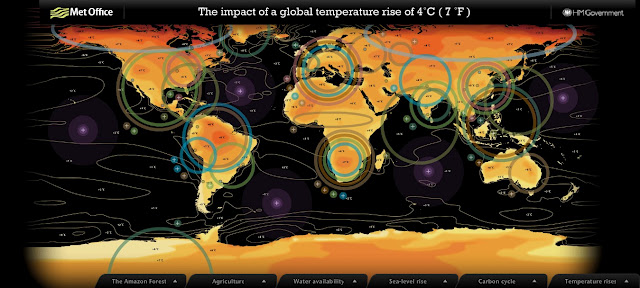
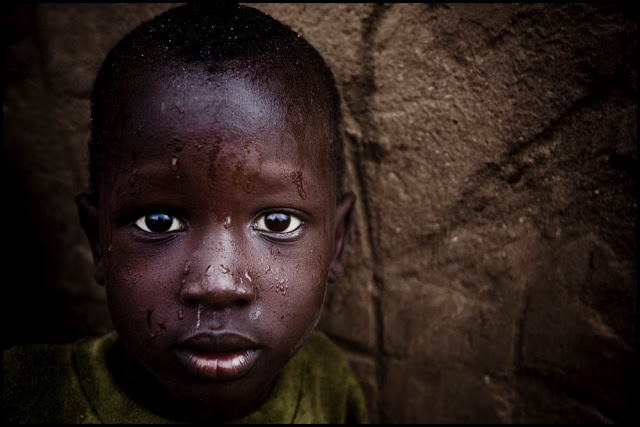

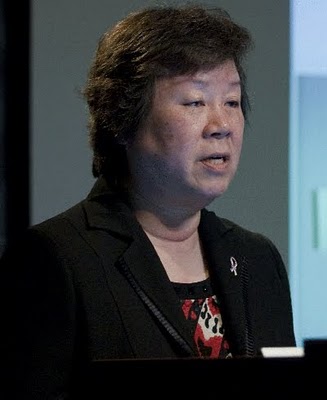
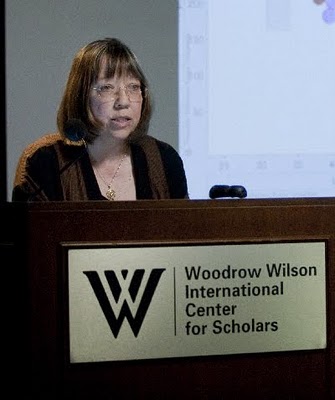
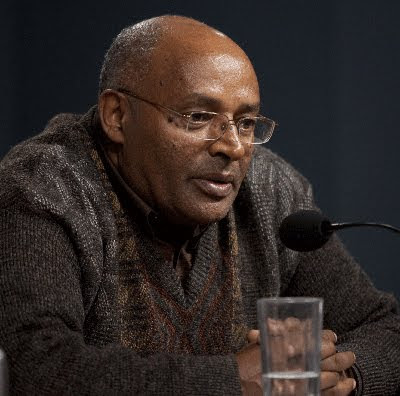

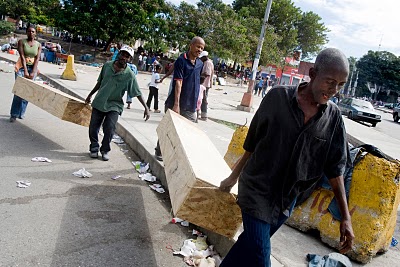
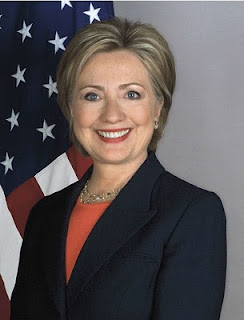 “It’s not every day you find an issue where effective diplomacy and development will allow you to save millions of lives, feed the hungry, empower women, advance our national security interests, protect the environment, and demonstrate to billions of people that the United States cares. Water is that issue,” declared Secretary of State Hillary Clinton at a
“It’s not every day you find an issue where effective diplomacy and development will allow you to save millions of lives, feed the hungry, empower women, advance our national security interests, protect the environment, and demonstrate to billions of people that the United States cares. Water is that issue,” declared Secretary of State Hillary Clinton at a 